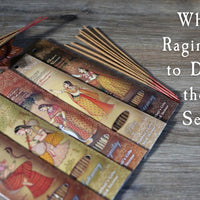Why 108 beads?
As we all noticed, the mala consists of 108 beads. But why 108? In this article we will explore the wonders of this mysterious and auspicious number. The Eastern philosophy as well as in science, many of the principal substances and structures are described in relation to the number 108. For example:- 108 Principal Upanishads
- 108 Marma points (energy points in the astral body)
- 108 poses of Lord Shiva in his cosmic dance, and equivalently, 108 poses in the Indian classical dance
- 108 nadis, or energy channels, flow through the heart chakra
- In Vedic astrology there are 12 constellations, and 9 arc segments called namshas or chandrakalas. Nine times 12 equals 108.
Unity, Nothingness and Infinity
 The number 108 consist of 3 digits: 1, 0 and 8. The digit 1 represents oneness, or unity. Zero represents emptiness or nothingness, and the digit 8 represents infinity. Thus the number 108 includes within itself the three fundamental spiritual principals.
The number 108 consist of 3 digits: 1, 0 and 8. The digit 1 represents oneness, or unity. Zero represents emptiness or nothingness, and the digit 8 represents infinity. Thus the number 108 includes within itself the three fundamental spiritual principals.
Oneness: According to the rishis, or the seers of the Truth, all concepts of duality in the world are false and due to the conditioned state of the mind, but the reality is, in fact, unity or oneness. Vedanta may say that all is Brahman while Buddhism calls it “it”. Judaism claims “God is One”, but they all mean one thing – that behind all names and forms there is only one substance.
Nothingness or Emptiness: These refer to the non-existence of the ego, or the false identification of the Self as a separate being that is disconnected from the whole or oneness. (Click here to read the poem Dial Zero by Prabhuji).
Infinity: The infinity is that which is beyond the limitation of the mind. The mind creates the limiting concepts of time and space, but the reality is beyond that and not limited by anything.
Protection From the Enemies of the Soul
According to the Bhagavata Purana (7:8:10) and other scriptures, there are 6 enemies of the Soul.
“Previously there were many fools like you who did not conquer the six enemies that steal away one’s wealth. These fools were very proud, thinking, ’I have conquered all enemies in all the ten directions.’ But if a person is victorious over the six enemies and is equipoised toward all living entities, for him there are no enemies. Enemies are merely imagined by one in ignorance.”
Who are the six enemies? Some describe them as: desire, anger, greed, attachment, pride and envy, while others describe them as the 5 sense organs and the mind. If we take both of those explanations to be true, we see that each of the evil intentions is affected and affecting the 5 senses and the mind, and are also influenced by the three modes of nature: rajas, tamas and sattva. Thus: 6x6x3=108: 108 varieties of wrong attitudes and actions that we aspire to purify ourselves from.
Thus, the japa mala practice with the repetition of the holy names 108 times gives us spiritual strength and protection, and helps us to transcend and win these enemies of the soul. (Let us briefly mention here that Prabhuji, the founder and the inspiration of Prabhuji’s Gifts, calls the malas “spiritual weapons”.)
Sumeru: The Untouched Bead
 In addition to the 108 auspicious beads, each mala has a larger bead called Sumeru or Meru, which is holding the entire mala together. Traditionally this bead remains untouched while chanting. When the practitioner reaches the 108th bead, he or she turns the mala over and continues chanting in the other direction. The Sumeru bead is named after Mount Meru or Sumeru. This mountain holds great significance in Eastern philosophy. According to the ancient scriptures, this mountain is considered to be the center of all the physical, metaphysical and spiritual universes, and the residence of the Gods. One of the descriptions of Mount Meru is found in the great book called the Mahabharata (6:6), which describes it in this way:
In addition to the 108 auspicious beads, each mala has a larger bead called Sumeru or Meru, which is holding the entire mala together. Traditionally this bead remains untouched while chanting. When the practitioner reaches the 108th bead, he or she turns the mala over and continues chanting in the other direction. The Sumeru bead is named after Mount Meru or Sumeru. This mountain holds great significance in Eastern philosophy. According to the ancient scriptures, this mountain is considered to be the center of all the physical, metaphysical and spiritual universes, and the residence of the Gods. One of the descriptions of Mount Meru is found in the great book called the Mahabharata (6:6), which describes it in this way:
Between these two (Malyavat and Gandhamadana) is a globular mountain called Meru made of gold. Effulgent as the morning sun, it is like fire without smoke. It is eighty-four thousand Yojanas high, and, O king, its depth also is eighty-four Yojanas. It standeth bearing the worlds above, below and transversely… The foremost of luminaries, the sun, always circumambulates Meru, as also the moon with (his) attendant constellation, and the Wind-god too. The mountain, O king, is endued with celestial fruits and flowers, and it is covered all over with mansions made of furnished gold. There, on that mountain, O king, the celestials, the Gandharvas, the Asuras, and the Rakshasas, accompanied by the tribes of Apsaras, always sport. There Brahman, and Rudra, and also Sakra the chief of the celestials, assembled together, performed diverse kinds of sacrifices with plentiful gifts.
 Just as the sun circumambulates Mount Meru, but never crosses it, the practitioner does not touch the Meru bead while chanting mantras.
Just as the sun circumambulates Mount Meru, but never crosses it, the practitioner does not touch the Meru bead while chanting mantras.
The Sumeru bead is said to collect and contain all the energy that was accumulated in the mala while the chanting takes place, and healers testify that this bead has special healing qualities while being placed on the sick area of a person or one’s energetic center.
The Index Finger and Left Hand Are Out of the Game
Traditionally the chanting on mala is done with the middle finger and thumb holding the beads. The index finger should not touch the beads. The reason behind it is that, in Hinduism, the index finger represents the ego, as it points to “I” and “he”, etc. Another reason is that the index finger represents the fire elements, and touching the mala with it while chanting will burn away or soak up all the energy of the chanting.
And last thing, the mala should be chanted using the right hand, as the left hand is considered impure.
To read more about Japa and Mantra Yoga practice, click here.








0 comments